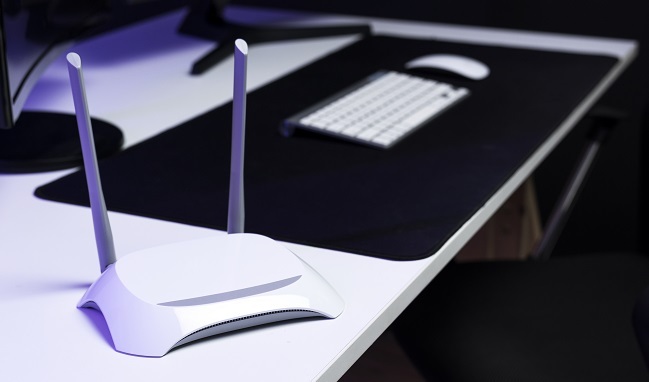
 Data Structure
Data Structure Networking
Networking RDBMS
RDBMS Operating System
Operating System Java
Java MS Excel
MS Excel iOS
iOS HTML
HTML CSS
CSS Android
Android Python
Python C Programming
C Programming C++
C++ C#
C# MongoDB
MongoDB MySQL
MySQL Javascript
Javascript PHP
PHPPhysics
Chemistry
Biology
Mathematics
English
Economics
Psychology
Social Studies
Fashion Studies
Legal Studies
- Selected Reading
- UPSC IAS Exams Notes
- Developer's Best Practices
- Questions and Answers
- Effective Resume Writing
- HR Interview Questions
- Computer Glossary
- Who is Who
What is the full form of FHCS?
Introduction
Fragment Header Check Sequence (FHCS) are nothing but data packets are subject to a network-based safety check. Due to a number of extra bits that were added to the packet header, the data was neither altered nor deleted throughout the transmission process.

The sending device adds these bits to the packet, and the receiving device checks them to make sure everything is still the same. If there are any problems, it means that something went wrong with the data and it needs to be fixed.
Purpose of Fragment Header Check Sequence
In network communication, the Fragment Header Check Sequence (FHCS) is an essential element for guaranteeing the accuracy and integrity of data while it is being transferred. A set of bits calculated by the sender are appended by the FHCS to the packet header. This calculation is performed to ensure that the data wasn't corrupted or damaged during transmission.
When the packet reaches the receiver, the FHCS is calculated using the packet data received, and the results are compared to the initial calculation. For the data to be judged error-free and prepared for processing, both computations must concur. If the outcomes of the two computations differ, there is a problem that needs to be resolved.
Data packets can be impacted by a number of causes, including interference, noise, and collisions, hence the FHCS is required. These elements may result in transmission mistakes and discrepancies, which may affect the quality and dependability of the data.
FHCS Implementation
The Fragment Header Check Sequence (FHCS) implementation involves several stages to ensure that data packets are carried correctly and without mistakes.
The transmitting device computes the FHCS by running a mathematical procedure on the packet header. This is often a cyclic redundancy check (CRC), which generates a bit sequence at the end of the header. Common transmission mistakes such as bit flips, missing bits, and excess bits are detected using the CRC method.
There is a chance that errors will occur while data is being transmitted via a network due to factors including interference, noise, and collisions. The Fragment Header Check Sequence (FHCS) is a procedure used to detect these errors and ensure that the data supplied is accurate.
A set of bits calculated by the sender are appended by the FHCS to the packet header. When the packet reaches the target device, the FHCS is checked to make sure no errors were transmitted. The receiving device then calculates the FHCS again and compares it to the FHCS received, using the same approach as the sending device.
If the two calculations match, the data packet is regarded as error-free and is prepared for processing. In the event that the estimated and transmitted FHCS differ, a data issue may result in the packet becoming garbled during transmission. The receiving device has two choices in this scenario: it can either reject the packet and ask for a new one, or it can ask for the packet to be resent.
The FHCS maintains the dependability and correctness of the data received, making it crucial for network connections. It helps in identifying errors that can compromise data integrity or result in incorrect data processing or interpretation. The FHCS is required to ensure data integrity during network transmission.
Importance OF FHCS in Network Communication
An essential part of network communication is the Fragment Header Check Sequence (FHCS), which ensures the integrity and quality of data packets transported over a network. Data packets, which are the basic building blocks of network communication, are crucial for assuring error-free transmission due to their uniformity and integrity.

The FHCS is necessary in order to detect network data transfer issues. Possible network communication issues include collisions, noise, and electromagnetic interference. The FHCS is able to detect problems by applying a mathematical operation to the packet header, like a cyclic redundancy check (CRC), and adding a series of bits to the packet as a result. Finding frequent gearbox problems such bit flips and missing bits is the aim of the procedure.
When the packet reaches the intended destination, the FHCS is checked to make sure it was sent properly. The receiving device recalculates the FHCS and contrasts it with the FHCS received using the same process as the transmitting device. If the estimated and transmitted FHCSs agree, the packet is handled correctly and is regarded as error-free.
If the estimated and transmitted FHCS don't agree, the packet was corrupted during transmission. The receiving device has two choices in this scenario: it can either request that the packet be transmitted again or it can discard it and request another one.
A number of network protocols, such as Ethernet, Wi-Fi, and Bluetooth, utilise the FHCS, which is a crucial part of reliable network communication. Without the FHCS, data packets would be more prone to mistakes, leading to incorrect data processing or interpretation. This could have disastrous effects in a variety of applications where data quality and integrity are essential, such as medical and financial systems.
Conclusion
In Conclusion, the Fragment Header Check Sequence (FHCS) is a vital component of network communication that ensures the integrity and accuracy of data packets during transmission. Its ability to detect and correct errors is crucial for guaranteeing reliable network communication, and it is widely employed in a variety of network protocols. The FHCS is a crucial component of network communication that ensures that the data received is accurate and can be trusted by the receiving device, laying the groundwork for dependable and error-free communication.
FAQs
Q1. What happens if the FHCS check is rejected?
If the FCS check fails, it means that the packet was corrupted during transmission. The receiving device can either retransmit the packet or delete it and request a new one.
Q2. How does the FHCS affect network latency?
The FHCS can add a modest degree of latency to network connection due to the additional processing necessary to calculate and verify the FHCS. However, the benefits of ensuring data packet accuracy and integrity during transmission outweigh the latency.
Q3. Can the FHCS be used to identify and correct issues with real-time communication, such as audio or video calls?
It is possible to identify and correct errors in real-time communication using the FHCS. Since errors may be more noticeable in real-time communication, the FHCS and other error detection and correction techniques should be used to ensure reliable network communication.

